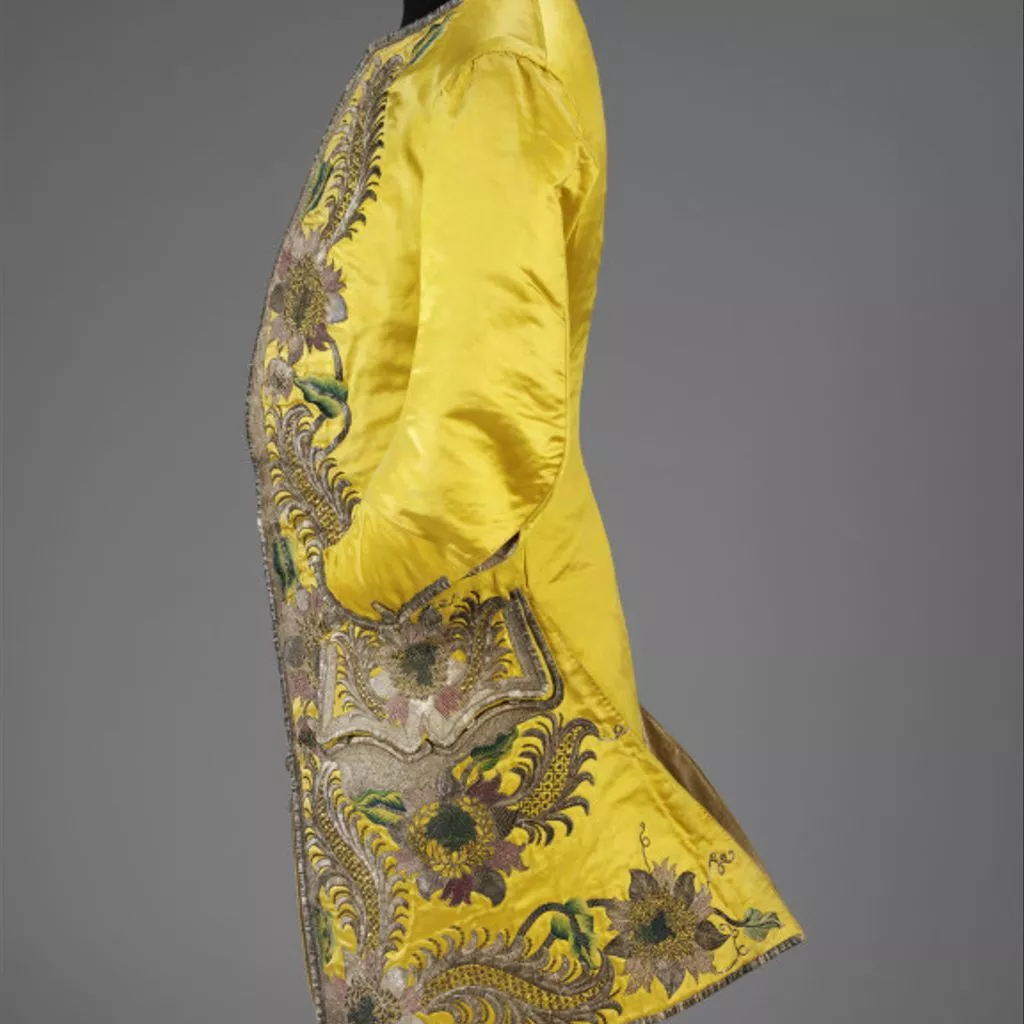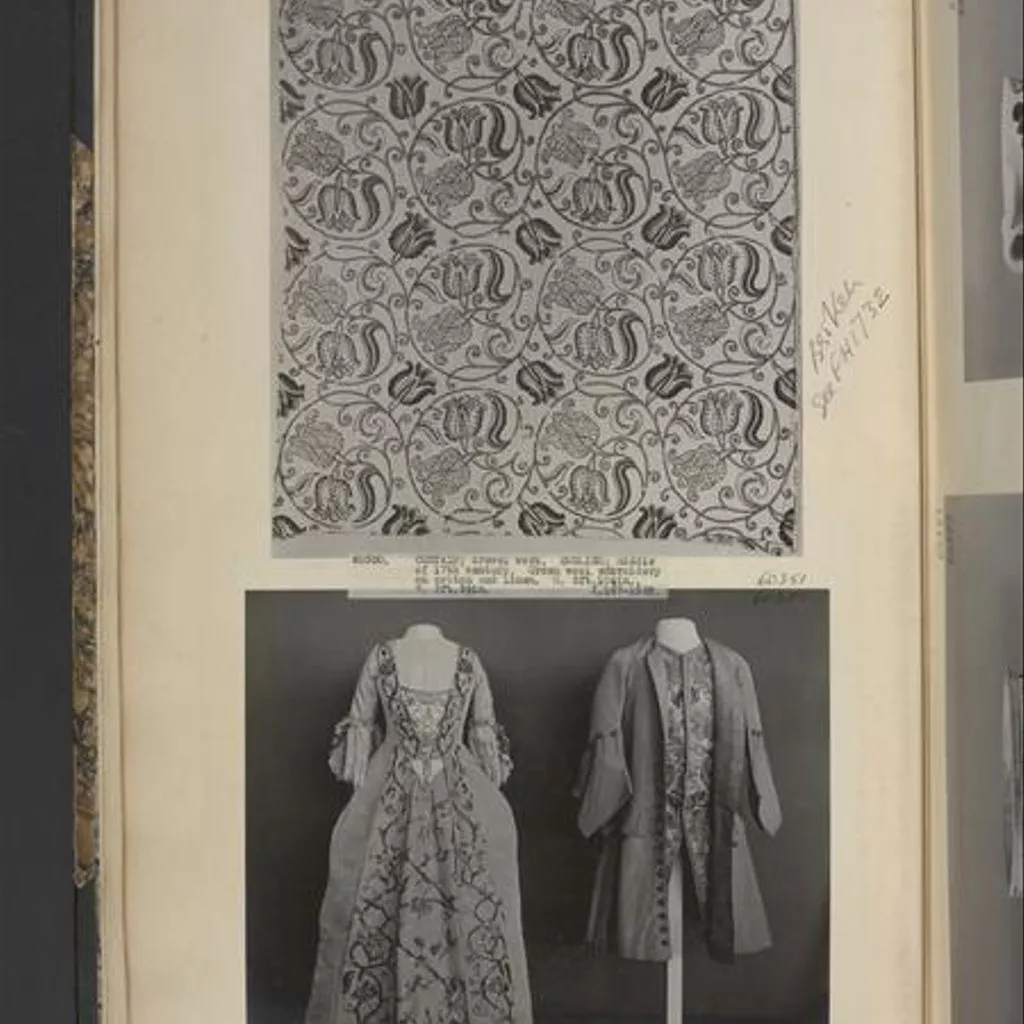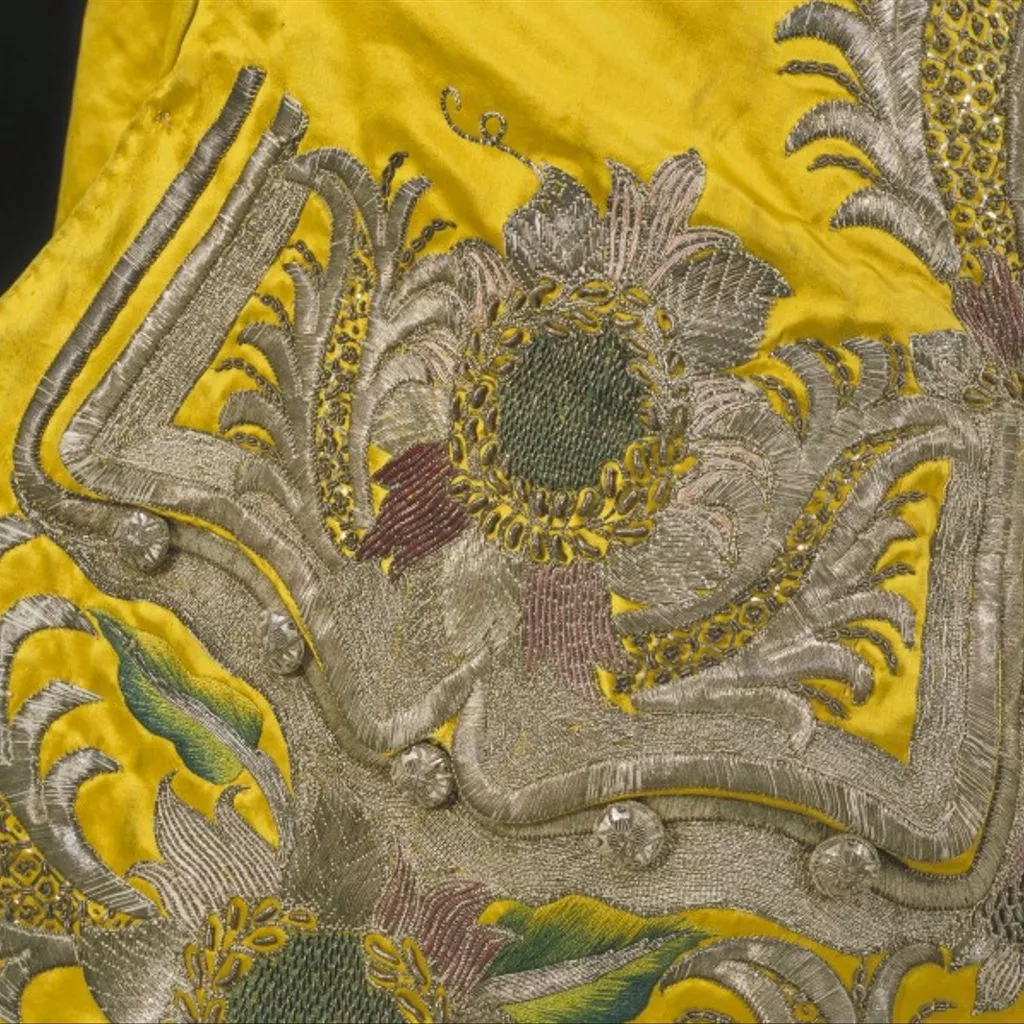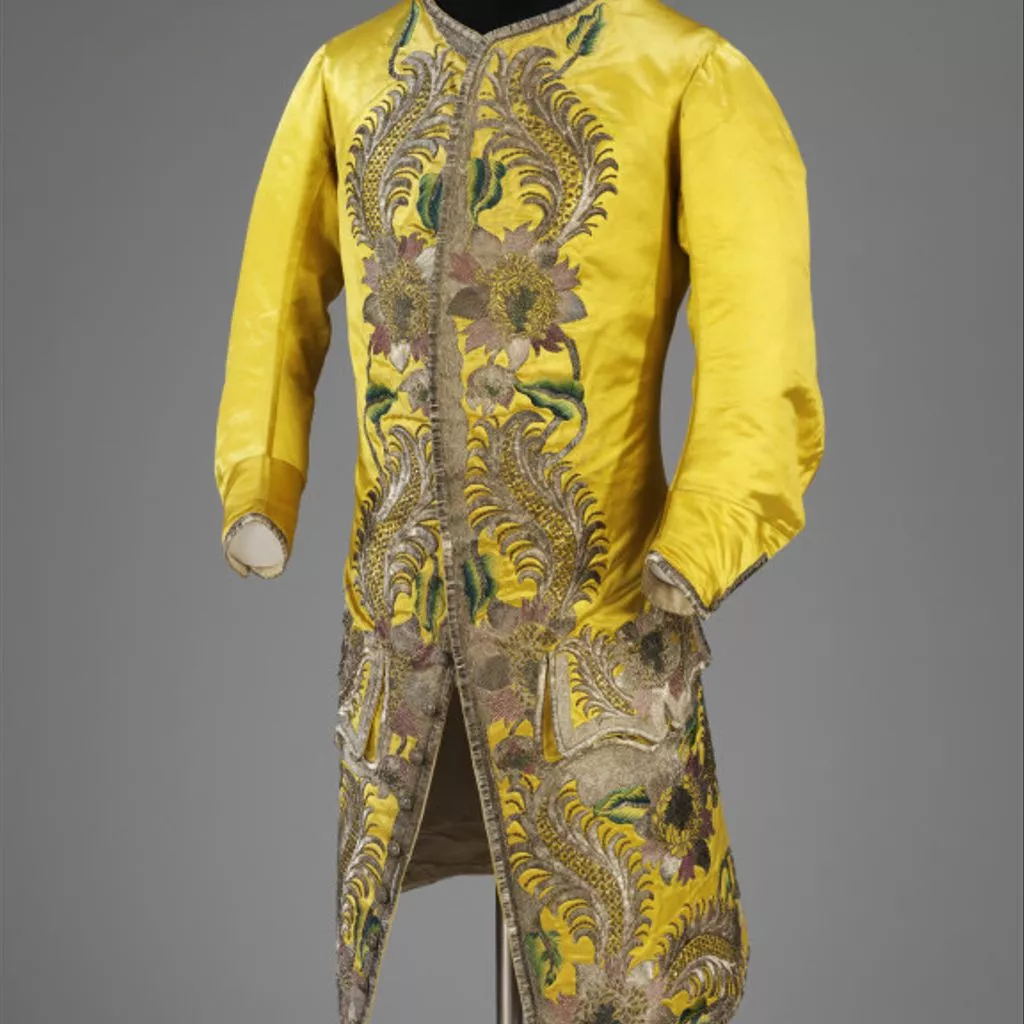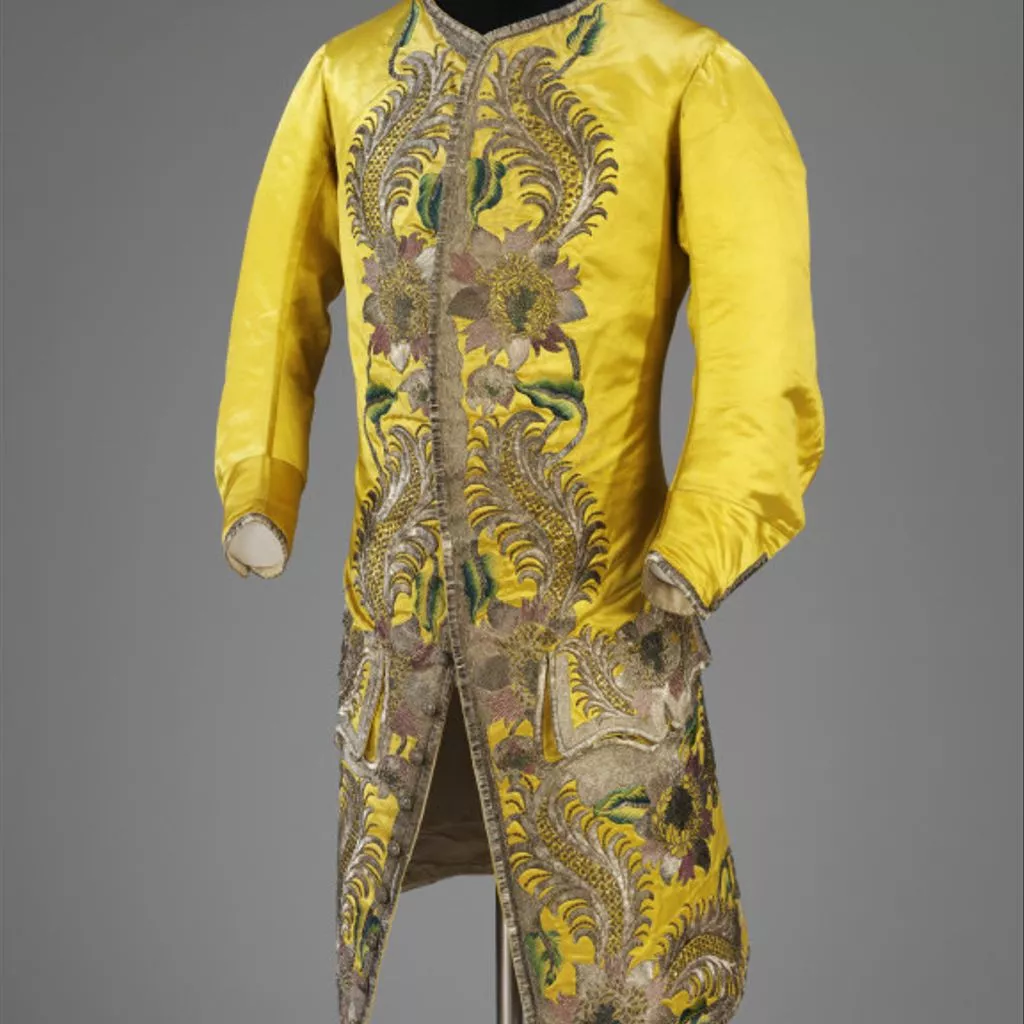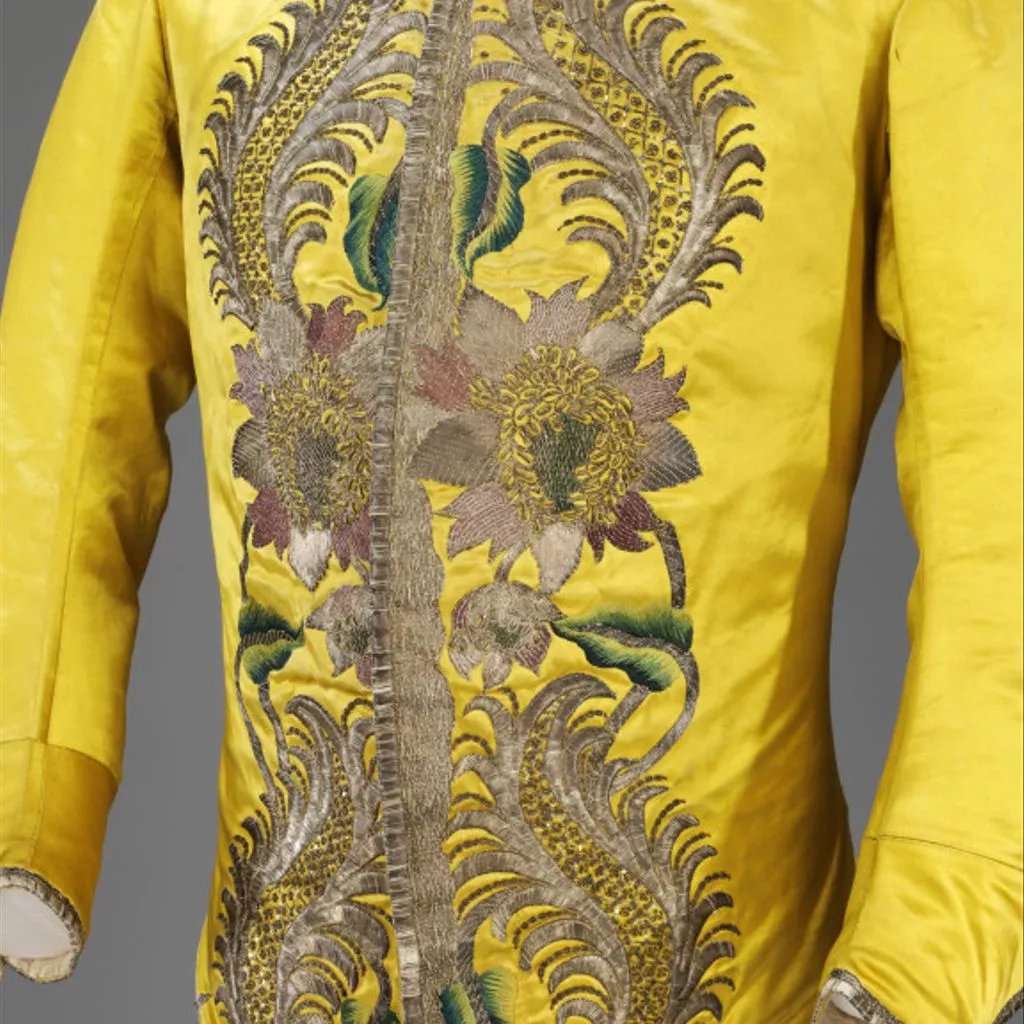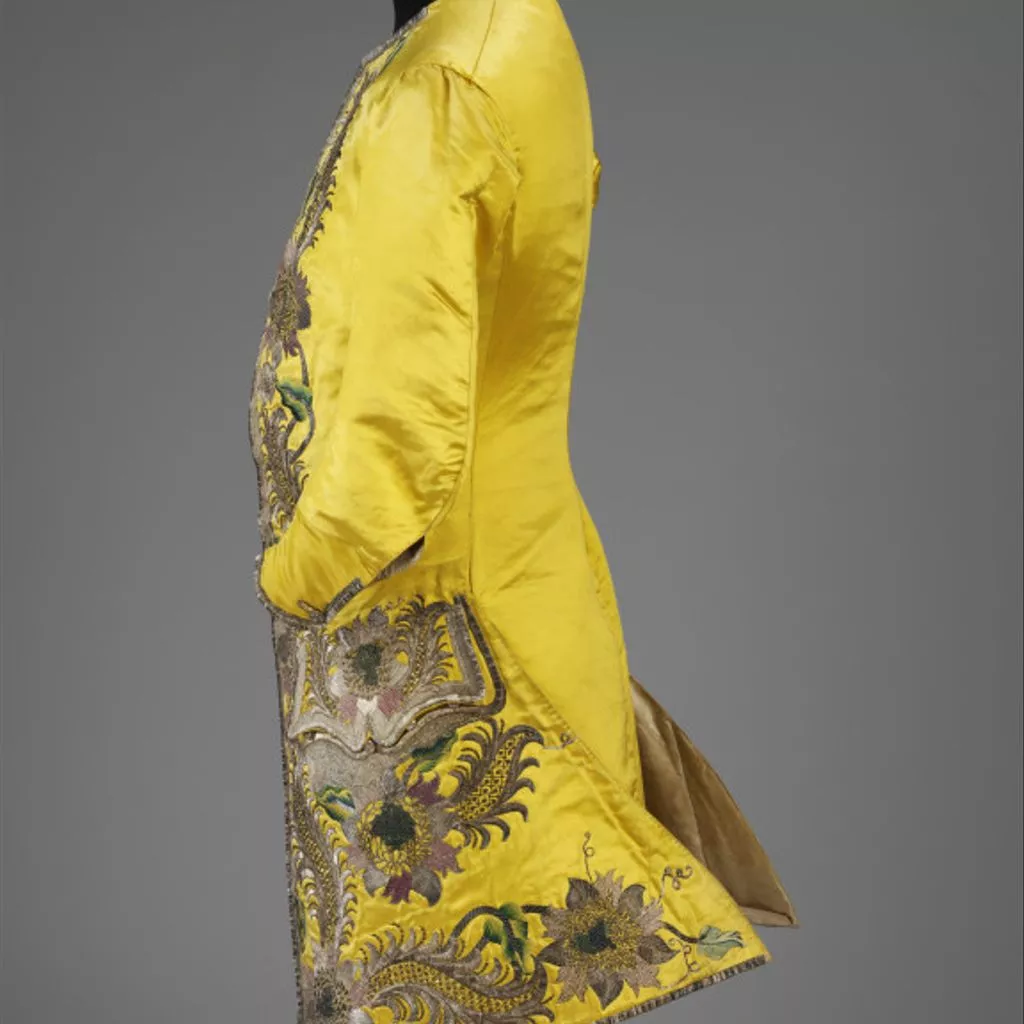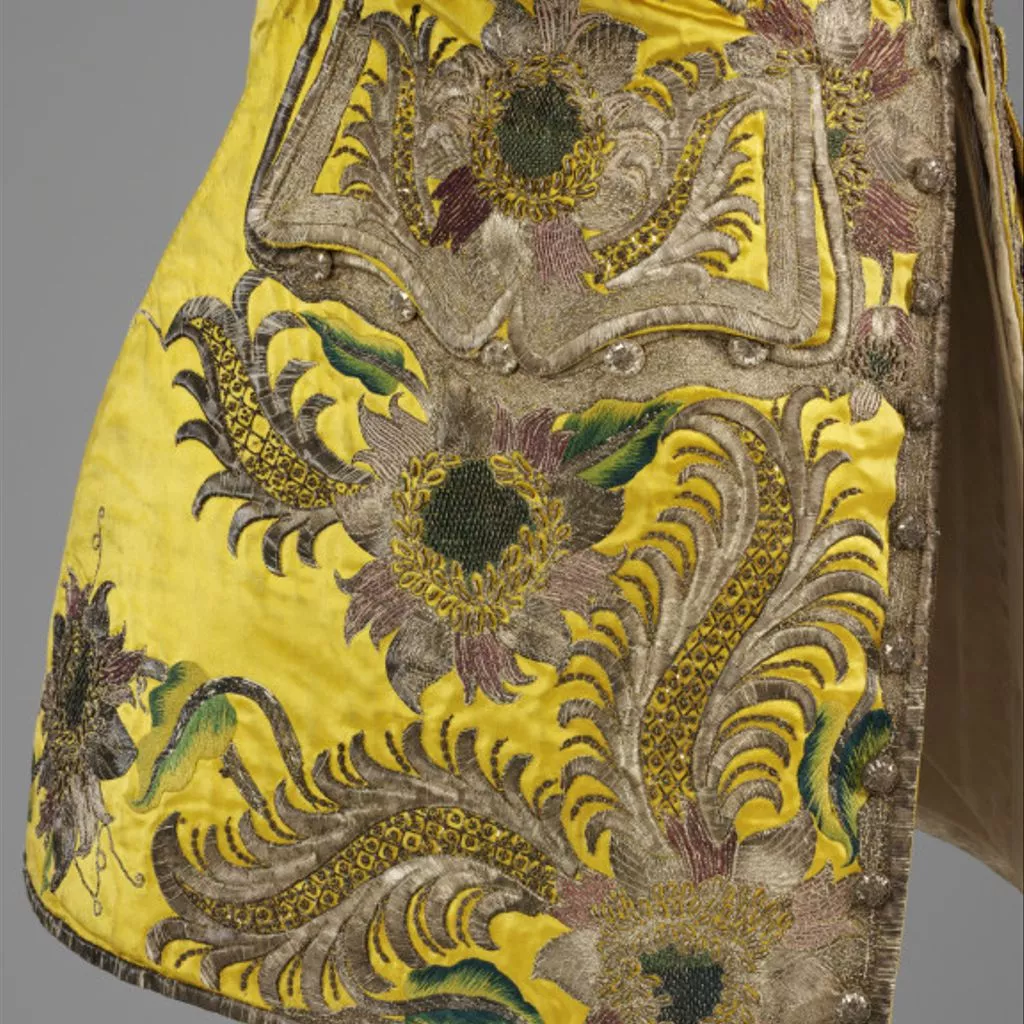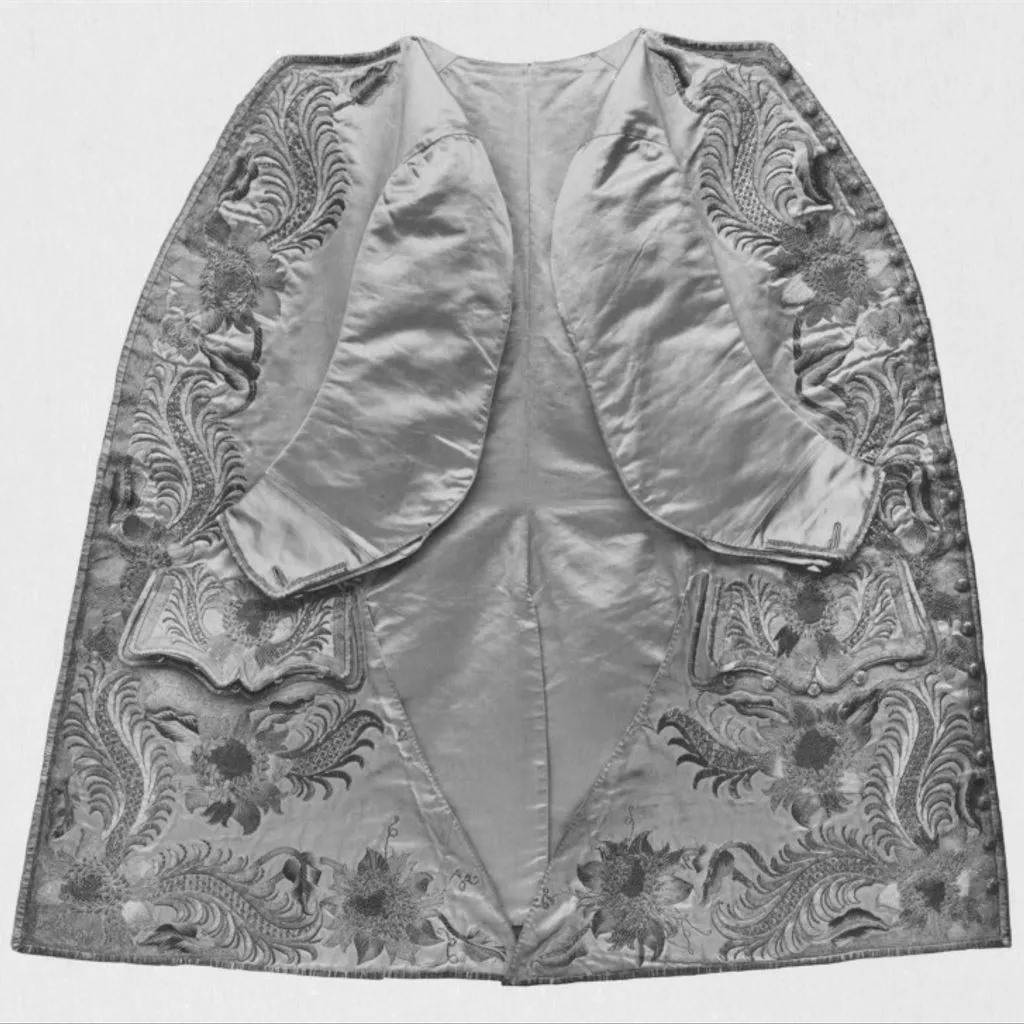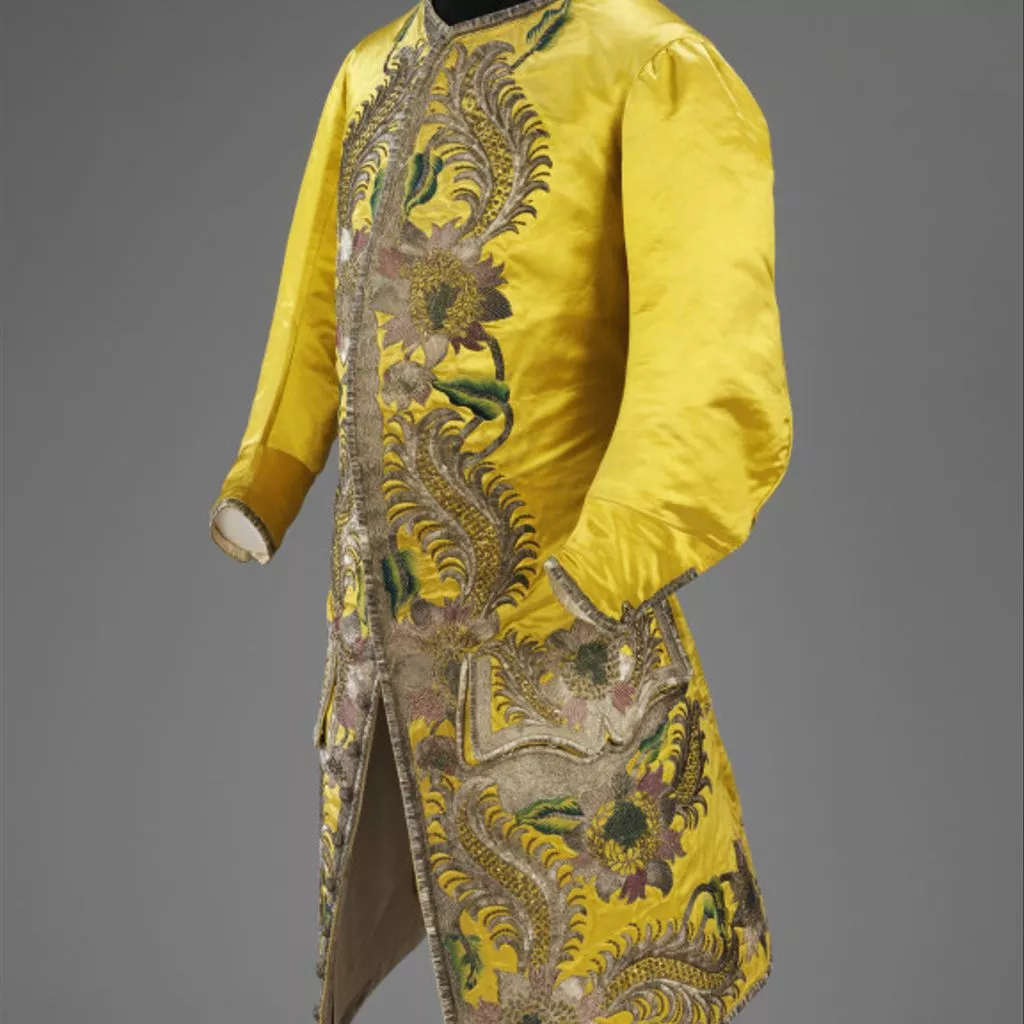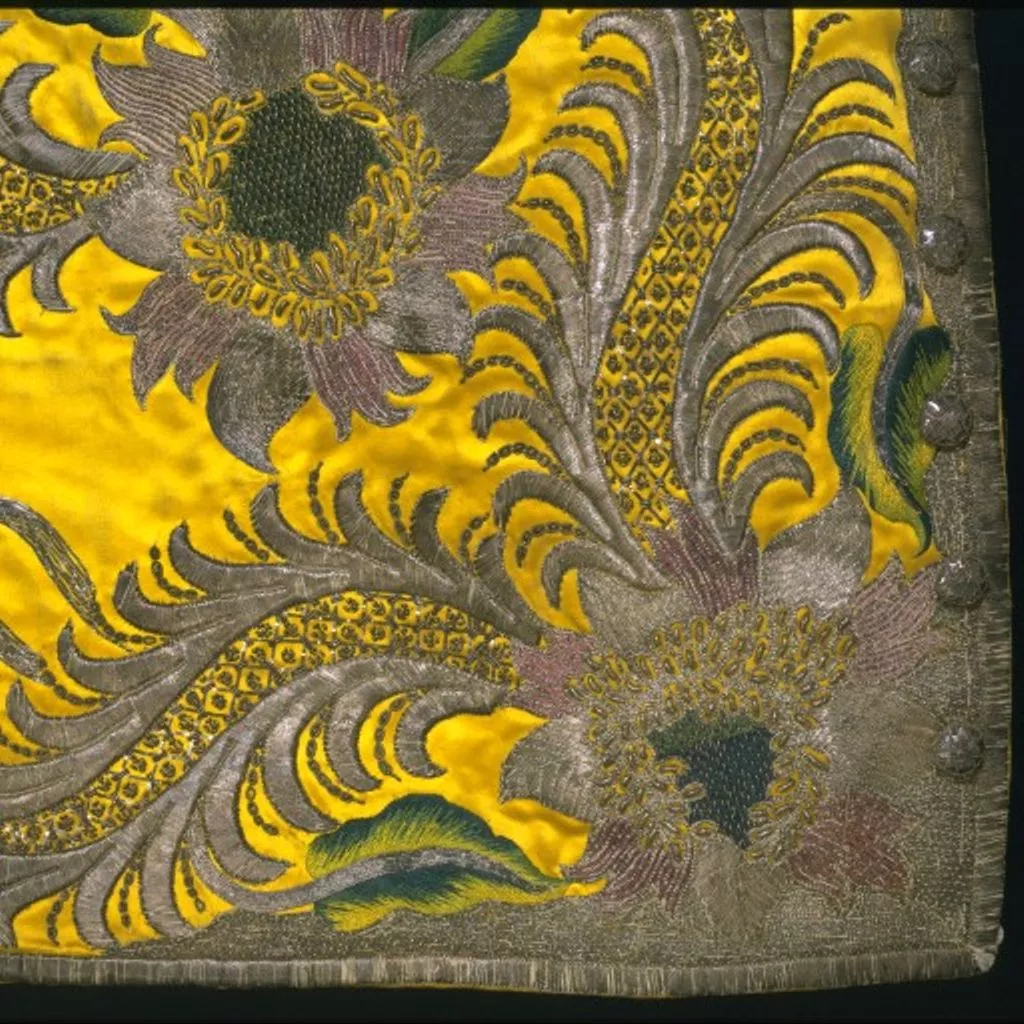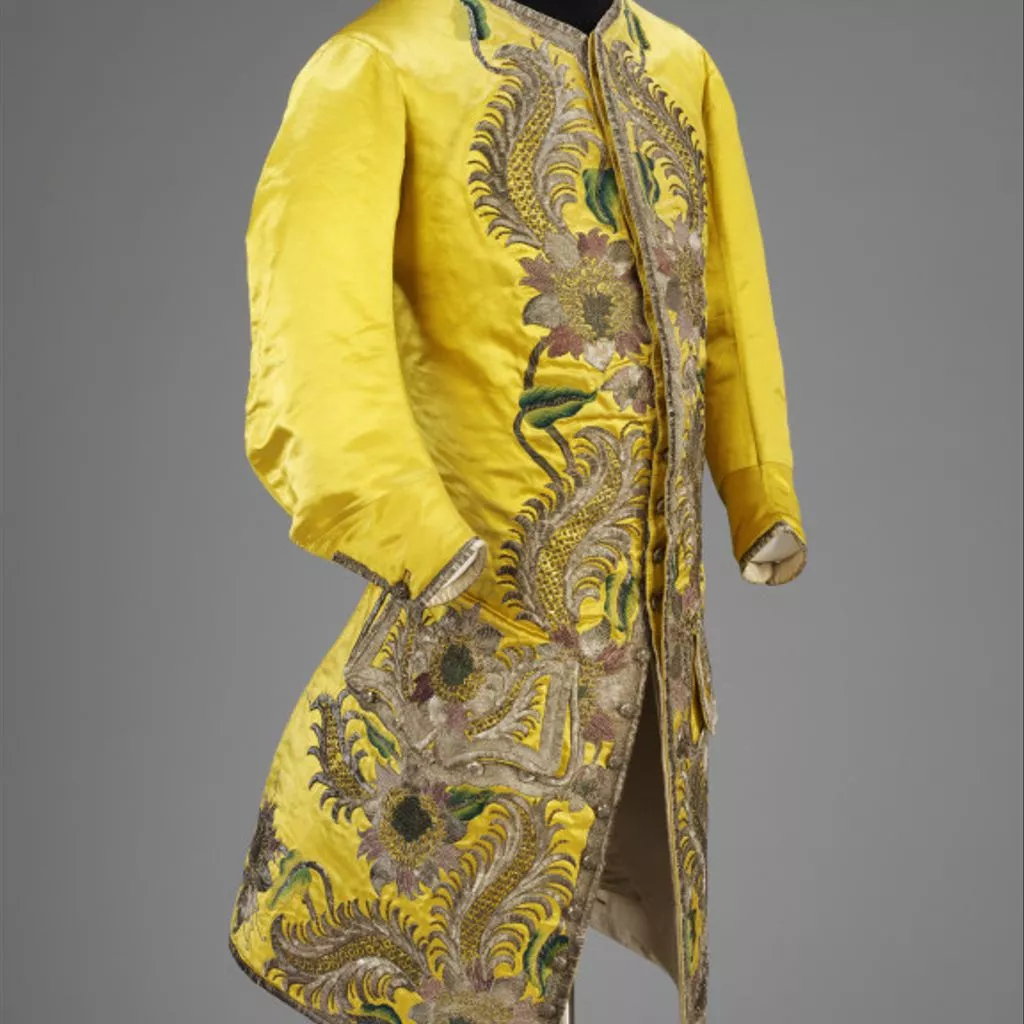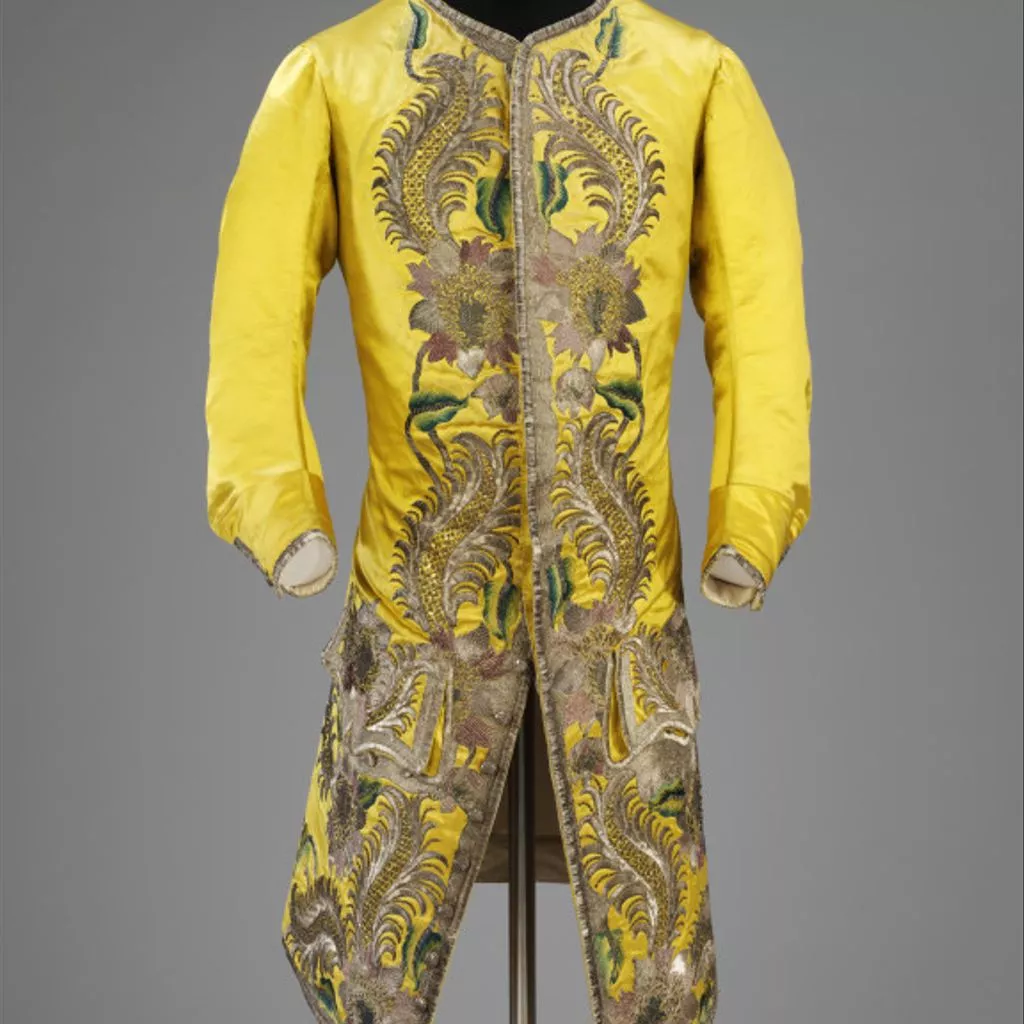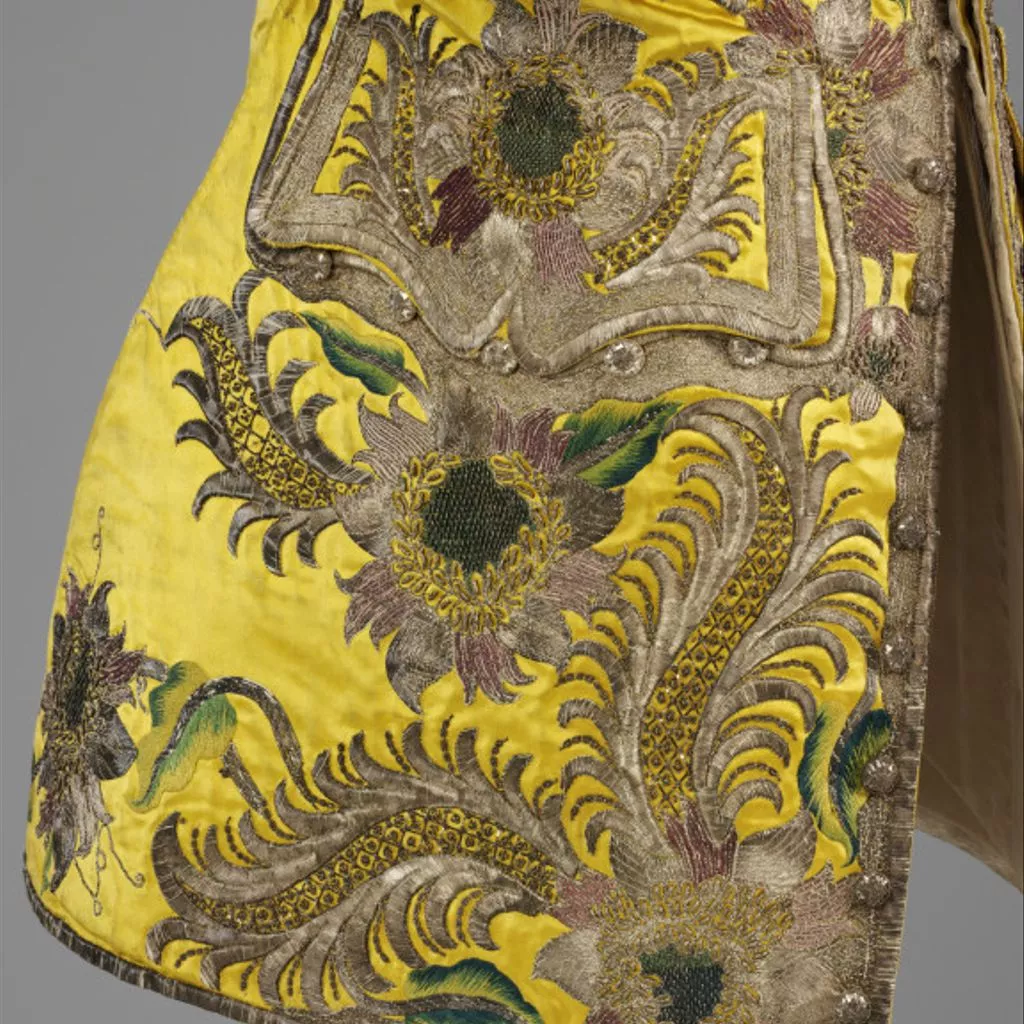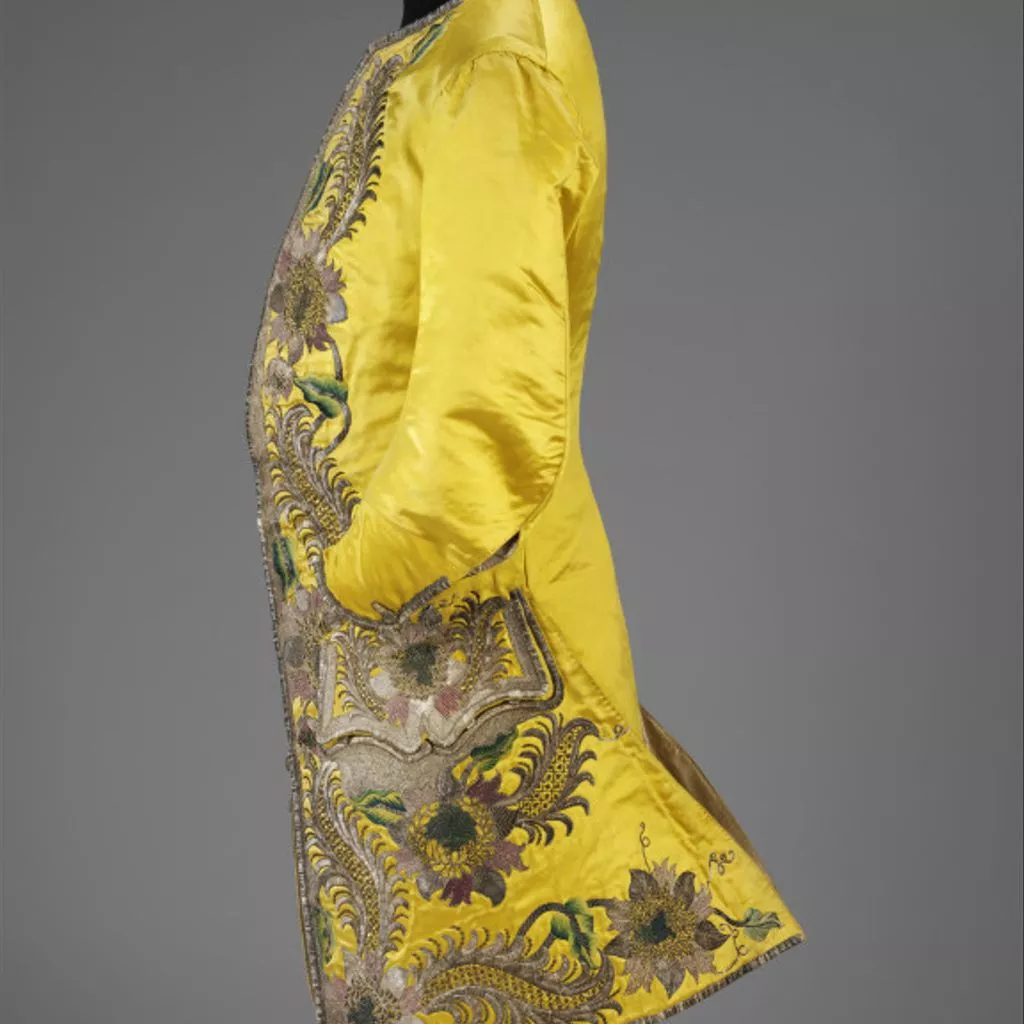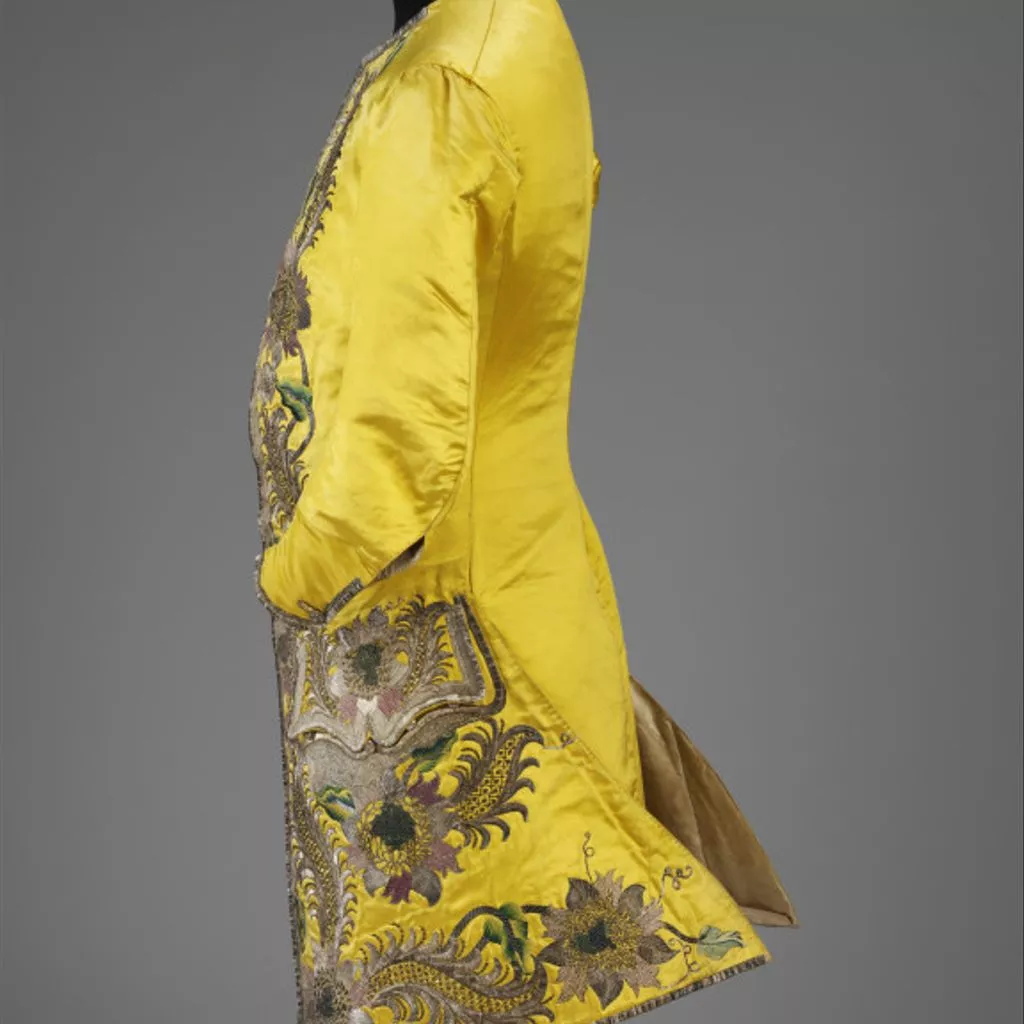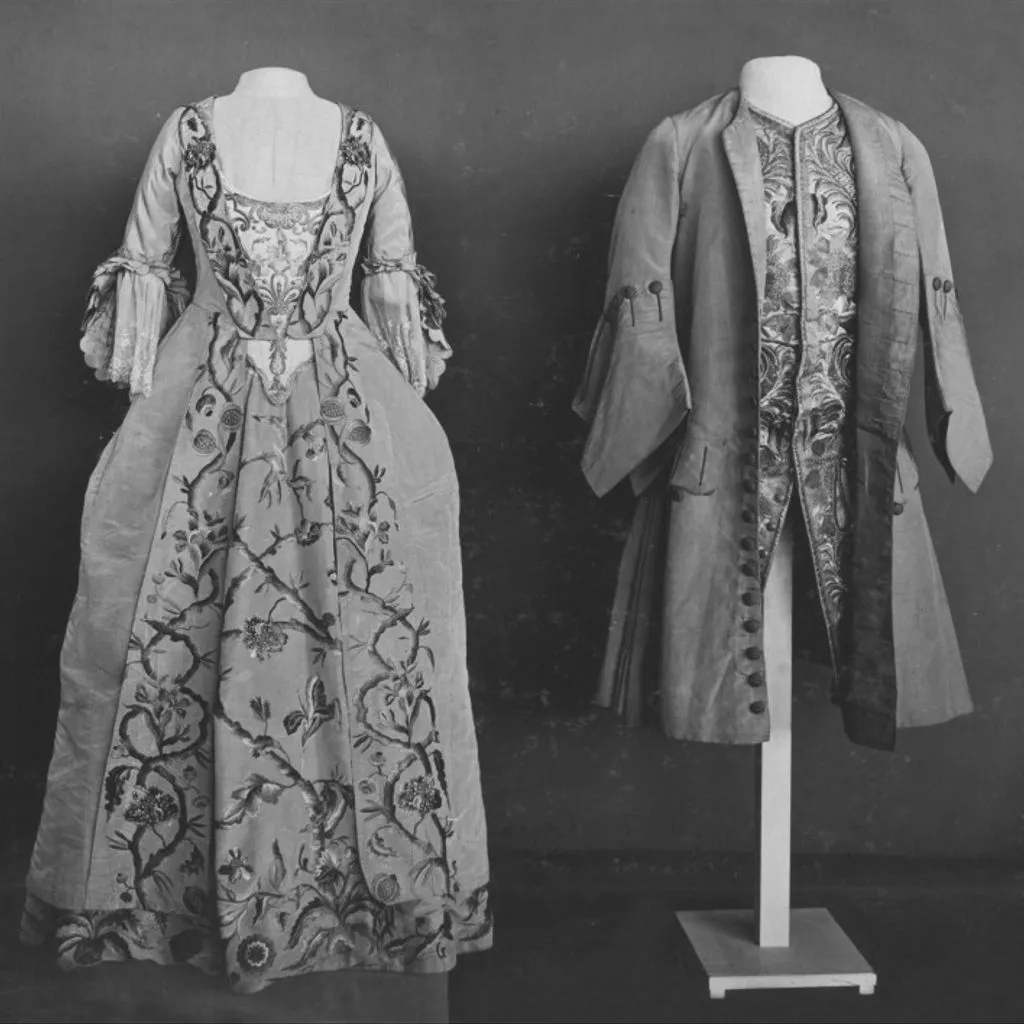Description
Unique
Waistcoat
1730–40
This richly embroidered waistcoat is an example of lavish European court dress. The bright yellow colour was fashionable for both men and women. The generous length and the pocket flaps allowed for rich decoration. The design includes Rococo motifs such as a sinuous pattern of scrolling leaves, but the bold treatment and large scale of the vegetation are more characteristic of the earlier Baroque style. The metal threads, when new, would have created a glittering effect.
France or England
Satin embroidered with silk and silver thread, strip and spangles
[09/12/2015]
This richly-embroidered satin waistcoat demonstrates the lavishness of court dress during the 1730s. The length of the waistcoat and the sumptuous embroidery and are both characteristic of the period and the rich yellow of the dyed satin was fashionable in men’s and women’s dress from the 1730s until the 1780s.
The waistcoat is embellished with embroidery in coloured silk and silver threads of several textures. The decorative pattern incorporates large stylised exotic flowers and leaves with feathered scrolls, arranged in broad borders down each front, over the pocket flaps and the front of the waistcoat skirts.
The scale of the embroidery pattern, its range of textures and use of metallic threads are reminiscent of the Baroque style, commanding splendid effects in rich materials. However, the design demonstrates characteristic Rococo elements of scrolls, naturalistic ornament and extravagant forms; with the regular sinuous pattern of ornate scroll shaped leaves and diapered infilling introducing the lighter grace of the Rococo style.
This waistcoat is unusually opulent as the expensive satin has been used not only for the front of the garment but also for the back and the three-quarter length sleeves, neither of which would have been visible when worn with a coat.
A man’s yellow satin waistcoat, embroidered with coloured silk, silver file thread, strip and spangles and lined with fustian and ivory silk.
The sleeves are three-quarter length and taper to above the wrist. There is no collar but the neck has decorative edging of metallic thread around the front, which continues down the edge of the waistcoat front and along the hem. The scalloped pocket flaps have the same decorative edging.
The back of the garment is slit at each side from the waist to the hem. The resulting flaring skirts have been wired at a later date to make them further stand out.
The waistcoat is embellished with embroidery in coloured silk and silver threads of several textures. The decorative pattern incorporates large stylised exotic flowers and leaves with feathered scrolls, arranged in broad borders down each front, over the pocket flaps and the front of the waistcoat skirts.
Decorative passementerie buttons run the length of the right-side waistcoat opening, trim the edge of the pocket openings and a single button fastens each cuff. Each button is worked with silver foil, purl, filé and a silver spangle. The upper twelve buttons on the front fasten the waistcoat while the lower nine buttons serve only for decorative purposes.
Man’s court waistcoat, yellow satin embroidered with coloured silk and silver thread, French 1730-1739






















